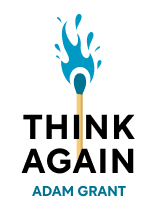

This article is an excerpt from the Shortform book guide to "Think Again" by Adam Grant. Shortform has the world's best summaries and analyses of books you should be reading.
Like this article? Sign up for a free trial here.
What is productive disagreement? How do you disagree with someone in a respectful and non-combative way?
Disagreeing productively means that you and the other person have a natural give and take and maintain an openness to working together. When you think of disagreement in this way, you can approach it as a fluid exchange of ideas—a generative and creative interaction rather than a combative argument.
Here’s how to have a productive disagreement, according to Adam Grant.
Productive Disagreements
The first step in having a productive disagreement is to frame the interaction as a healthy debate rather than a confrontation. Grant suggests that you say, “I would love to debate this issue with you.” This reassurance makes people understand that your goal is to explore ideas, not question their judgment or challenge their identity.
(Shortform note: Some other experts argue that before you can even attempt to reframe the discussion, you first need to make sure you’re physically calm. This puts you in a better position to have a calm, productive discussion: You’ll tamp down your natural “fight or flight” response and be less prone to misinterpreting the other person’s words as threats or taunts. To calm down, experts suggest practicing mindfulness (the state of being fully aware in the present moment) to tap into how your body is feeling. When you are aware that your body is tense, take steps to reduce your level of anxiety by lying down, taking a walk, or listening to music.)
Once you establish that your disagreement is a discussion rather than a fight, Grant suggests several techniques to demonstrate productive engagement to your counterpart.
- Express genuine interest in what the other person has to say. Expressing interest teaches the other person that their views are important and reassures them that they don’t have to take a defensive stance.
- Only present your strongest points. Present a small selection of strong arguments so you don’t overwhelm your partner and make them feel defensive. (Shortform note: Experts say you can identify strong arguments based on the evidence that supports the idea. If it lacks good evidence, it’s probably not a good argument.)
- Ask a lot of contemplative questions. When you ask questions, you encourage the other person to engage in question-oriented thinking, too. And because they’re now in question-asking mode, they may start to reconsider some of their beliefs leading them away from their more hardline stances.
- Express how you are feeling throughout the interaction. Expressing emotion teaches the other person that it is safe to be honest about how they feel. (Shortform note: Psychologist Carl Rogers suggests an additional way to make others feel safe in difficult conversations—expressing “unconditional positive regard” for them. In a specifically therapeutic context, this means maintaining a non-judgmental attitude no matter what the other person might say, letting them express all their emotions openly, and accepting them as they are.)
| Practice Calculated Empathy In Never Split the Difference, former FBI hostage negotiator Christopher Voss writes about concepts similar to those explored by Grant. Voss applies them specifically to the context of a negotiation. Crucial to Voss’s theory of negotiation is that good negotiators seek to build rapport, empathy, and trust with their counterpart, and don’t try to undercut or exploit them. Voss advocates using the technique of calculated empathy—understanding someone else’s feelings to get what you want from them. Calculated empathy gives you crucial insight into why someone is behaving the way they are. Ultimately, according to Voss, you need your counterpart to feel emotionally safe with you—you want them to see you more as a partner than an adversary. Voss outlines five calculated empathy techniques: 1. Active listening: Talk slowly and calmly to show that you’re concerned about how the other person feels. 2. Use the right tone: Use a light and encouraging voice as your default tone to put your counterpart at ease. 3. Reflect back: Repeat the last three words that the person has said in your next sentence. By imitating their speech patterns, you’re signaling to the other person not only that you’re hearing them, but also that you’re similar to them. 4. Label: Identify and vocalize someone else’s emotions through phrases like, “It seems like you’re disappointed by what’s being offered.” 5. Perform accusation audits: List every bad thing your counterpart could say about you at the beginning of the negotiation, through phrases like, “You probably think I’m lowballing you on this offer, that I’m trying to cheat you, and that I don’t have any respect for your intelligence.” This triggers your counterpart’s innate empathy and makes them want to reassure you that you’re not as bad as you’ve portrayed yourself. |

———End of Preview———
Like what you just read? Read the rest of the world's best book summary and analysis of Adam Grant's "Think Again" at Shortform.
Here's what you'll find in our full Think Again summary:
- Why the ability to reconsider is more important than precise knowledge
- How knowledge and expertise can narrow your thinking and limit your potential
- How to improve your ability to reconsider things in work and in life






